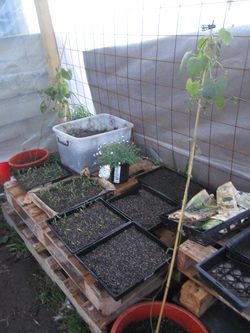
I've been collecting free pallets over the last couple of weeks, for various projects I have in mind - building compost bins, vertical gardens, pallet gardens for lettuce and so forth. They also make handy tables in the greenhouse. Various veges and flowers are in various stages of sprouting on them. I also splurged and bought myself an attractive plant called "Paper Cascade" which has beautiful crimson and white buds, followed by straw-flower like flowers. I have just the spot I want to plant it.
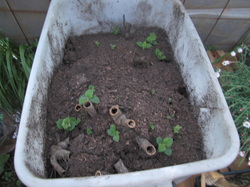
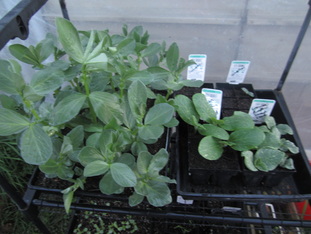
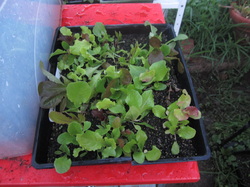
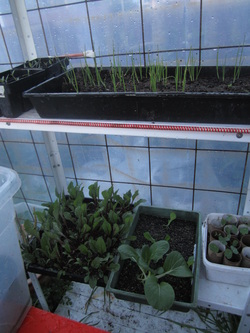
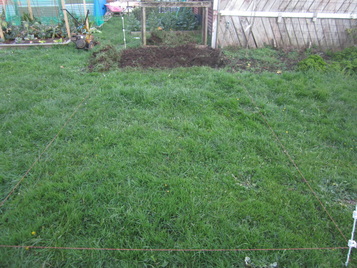
Potatoes are one crop I keep seeing so much conflicting advice about: sprout them, don't sprout them, sprout them in the dark, sprout them in a sunny place, don't plant before Labour Weekend (late Oct), any planted from Oct on will probably fall victim to psyllids, use the no-dig method, the no-dig method doesn't work, plant in tyres, don't plant in tyres, use plenty of manure and lime the soil, don't use manure or lime or you'll get scabby potatoes, yada yada yada! Hmmmmm! I think I'm going with my general plan this year - try everything, and figure out what works for ME!
Last summer I planted potatoes using the no-dig method. I planted late though, and didn't get very many decent sized spuds. However, the method DID do a wonderful job of clearing and making the soil nice in that area. It's just a pity my son now has car parts spread all over it for his restoration project, and I can't plant there again just yet!
This year, I'm going to dig over this patch of lawn, make traditional trenches, and add grass clippings (for nitrogen), sheep manure, blood and bone, Rok Solid (ground rock with a huge range of minerals) and gypsum to the bottom of the trench before planting the seed potatoes and slowly hoeing them up.
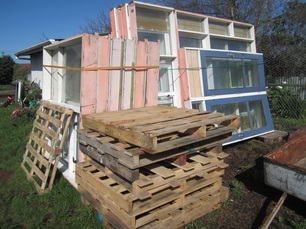
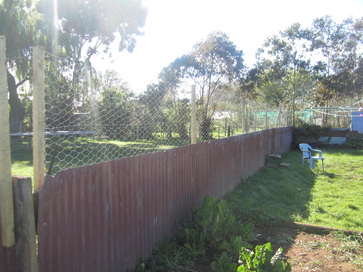
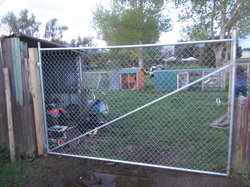
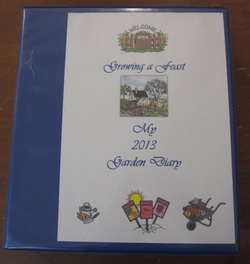
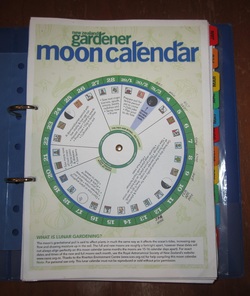
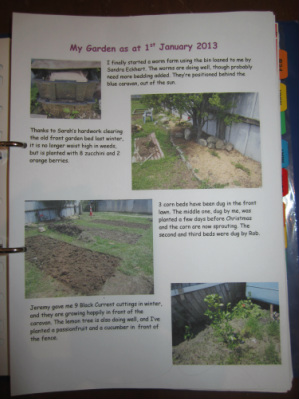
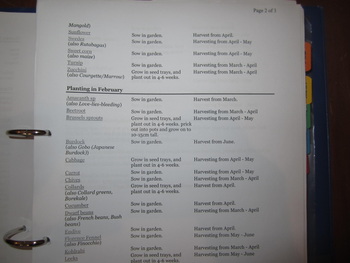
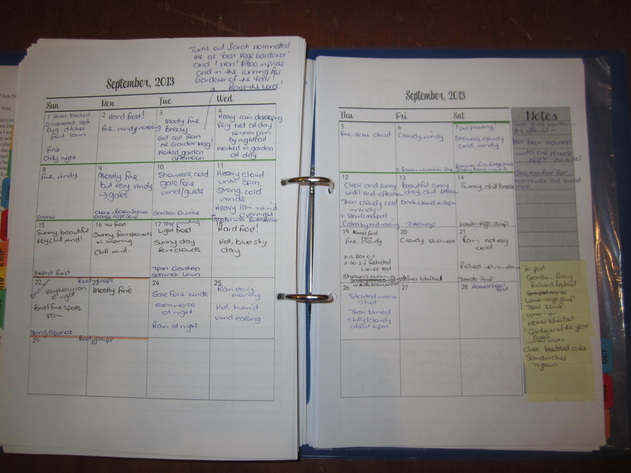
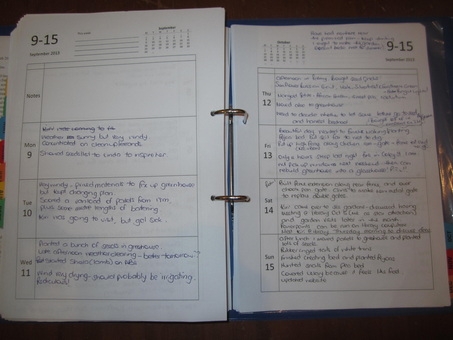

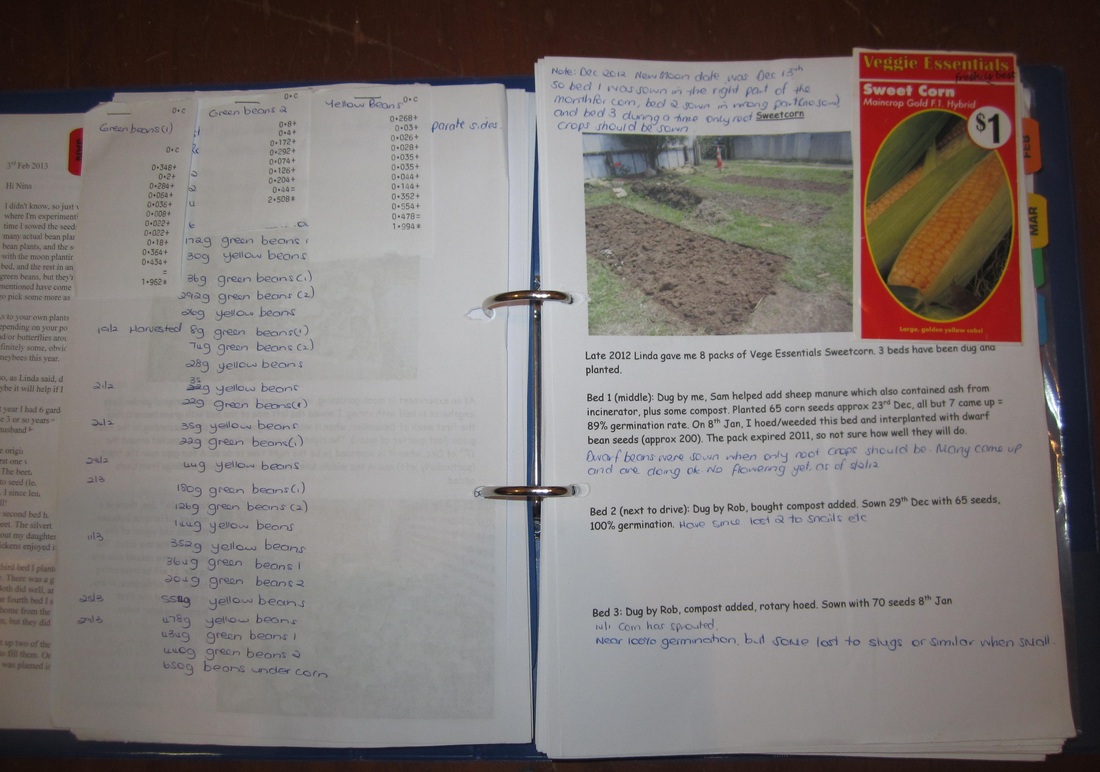

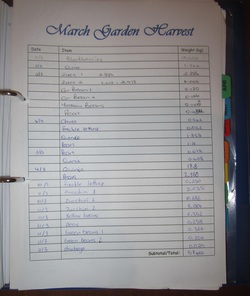
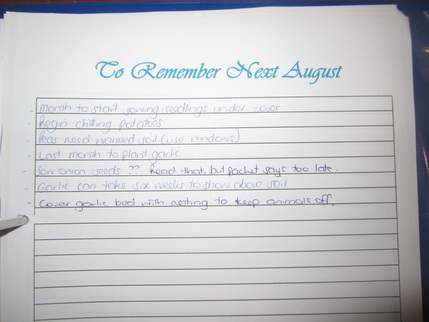
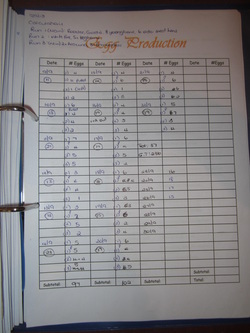
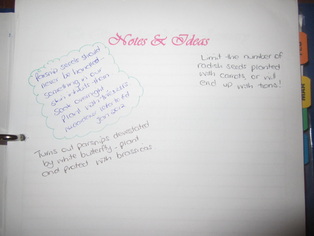
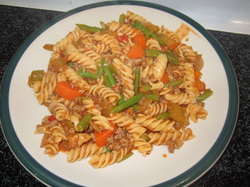
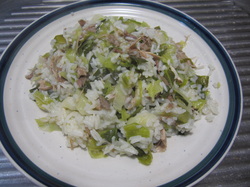
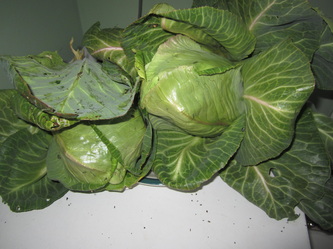
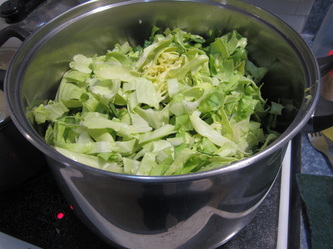
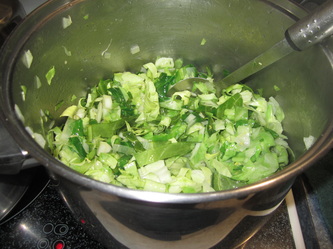
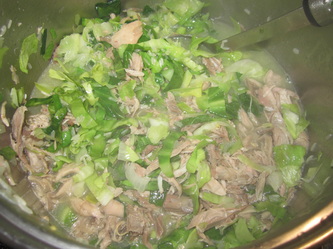
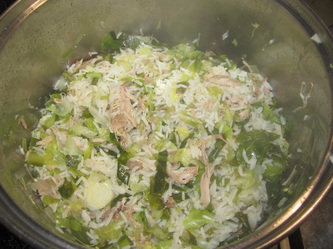
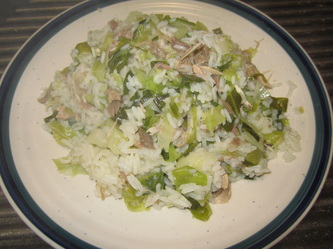
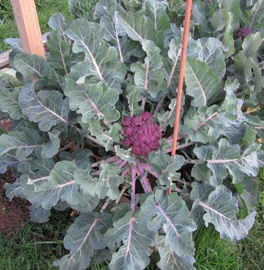
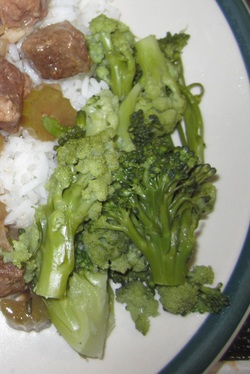
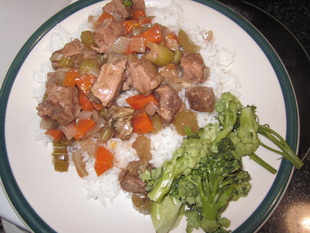
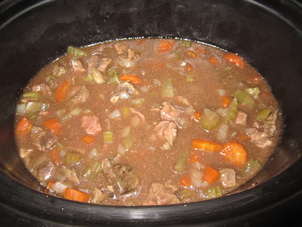
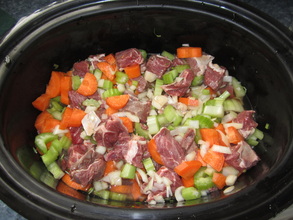
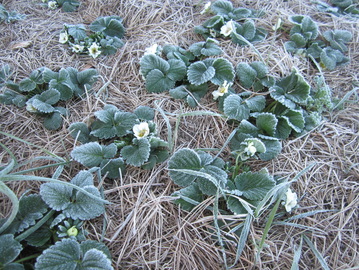

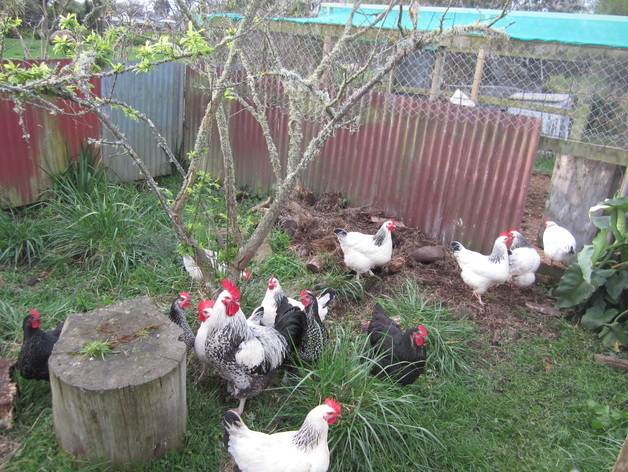
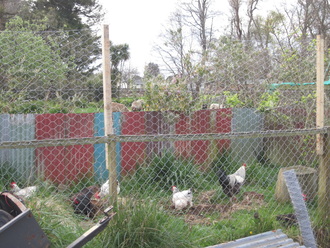
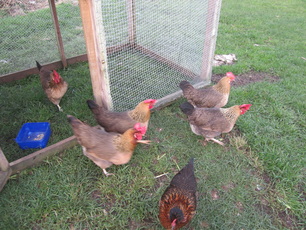
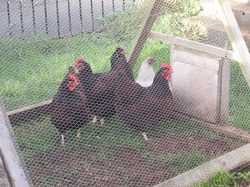
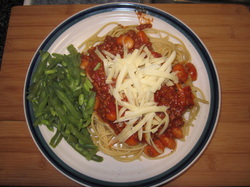
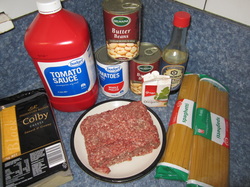
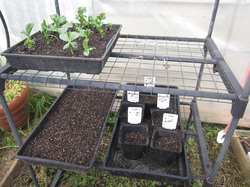
 RSS Feed
RSS Feed
